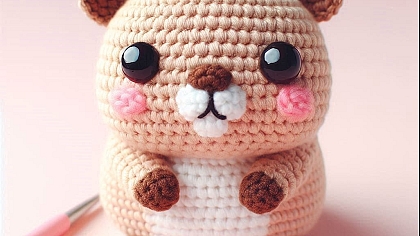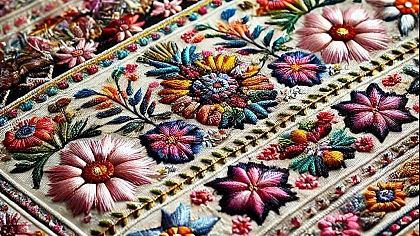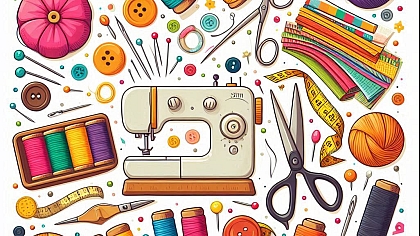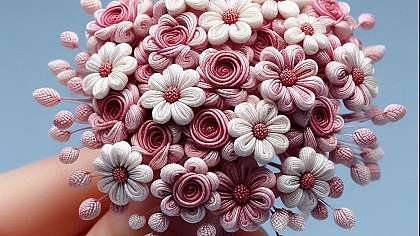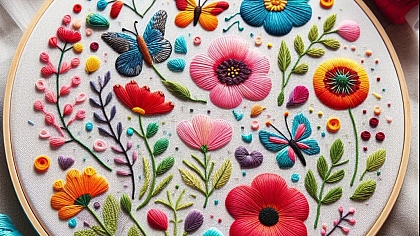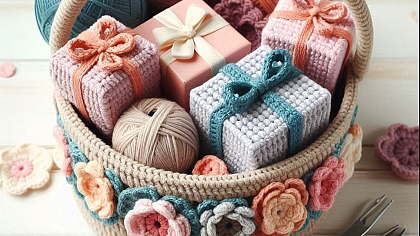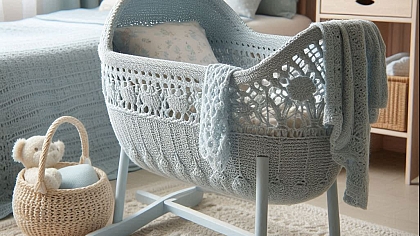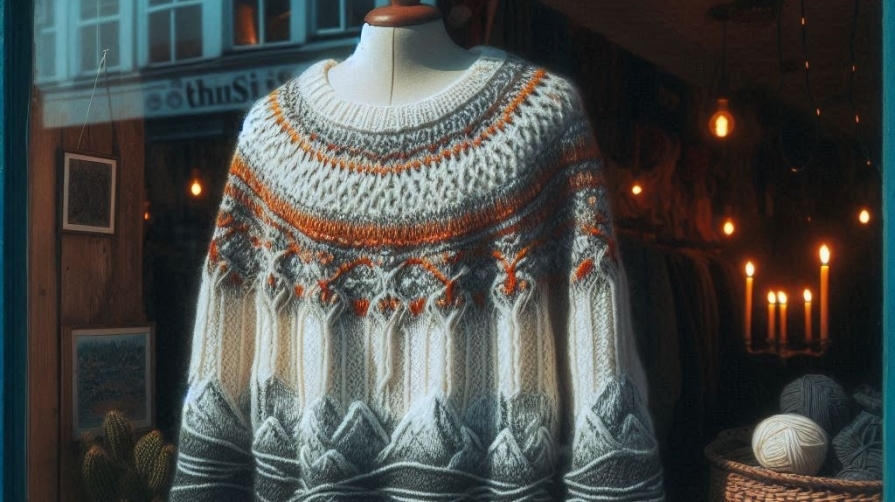
Mastering the Basics: A Beginner's Guide to Knitting
Knitting is an age-old craft that combines creativity and practicality, transforming simple yarn into intricate patterns and useful items. Its roots trace back to ancient civilizations, where early knitters used rudimentary tools to fashion garments for warmth and protection. Today, knitting has evolved into a beloved pastime for millions around the world, celebrated for its ability to produce everything from cozy scarves and warm blankets to stylish sweaters and intricate lace shawls.
Understanding Knitting: History and Fundamentals
Knitting has been a cherished craft for centuries, with its origins tracing back to ancient Egypt. Over time, it spread across Europe and the world, evolving in techniques and styles. Today, knitting is not just a practical skill but also a form of artistic expression and a therapeutic activity.
At its core, knitting involves creating fabric by interlocking loops of yarn with needles. The two primary stitches, knit and purl, are the foundation of all knitting patterns. By mastering these, you can create a variety of textures and designs.
Gathering Your Supplies: What You Need to Start Knitting

Before you begin knitting, you'll need a few essential supplies. Yarn is available in a variety of materials such as wool, cotton, and acrylic, weights ranging from light to bulky, and an array of colors. Beginners often find medium-weight yarn easier to handle. Knitting needles are available in different sizes and materials, including metal, plastic, and bamboo. Circular needles, double-pointed needles, and straight needles each serve specific purposes, but straight needles are typically recommended for beginners.
Other essential tools include a pair of scissors for cutting yarn, a tapestry needle for weaving in ends, and stitch markers to keep track of your stitches. A measuring tape will help ensure your project meets the desired dimensions, and a knitting gauge is useful for checking your stitch and row measurements against the pattern requirements.
Getting Started: Basic Knitting Techniques
With your supplies ready, it’s time to learn the basic techniques that form the foundation of knitting. The first step is to cast on, which creates the initial stitches on your needle. The long-tail cast-on method is popular among beginners due to its versatility and ease of use. To cast on, make a slipknot on your needle, leaving a tail long enough to accommodate the number of stitches you need. Wrap the yarn around your thumb and index finger, then use the needle to create loops that form the stitches.
Once you have cast on, you can begin knitting the basic stitches. The knit stitch is the most fundamental. Hold the needle with the cast-on stitches in your left hand and the empty needle in your right. Insert the right needle into the first stitch on the left needle from front to back, wrap the yarn around the right needle, and pull it through the loop to transfer the stitch from the left needle to the right. Repeat this process until you reach the end of the row.
The purl stitch is another essential technique that complements the knit stitch. Hold the needles the same way as for the knit stitch, but insert the right needle into the first stitch on the left needle from back to front. Wrap the yarn around the right needle and pull it through the loop, transferring the stitch from the left needle to the right. Practicing both the knit and purl stitches will enable you to create a variety of patterns and textures.
Mastering Tension: Consistency in Your Knitting

Achieving consistent tension is crucial for producing neat and even fabric. Tension refers to the tightness or looseness of your stitches, which affects the overall appearance and size of your project. Beginners often struggle with maintaining consistent tension, but practice and patience will help you improve.
When knitting, hold the yarn in your dominant hand and use your fingers to control the tension. Try to keep a relaxed grip on the needles and yarn, allowing the stitches to flow smoothly. If your stitches are too tight, they will be difficult to work with and may cause your fabric to pucker. Conversely, if your stitches are too loose, the fabric may appear sloppy and lack structure.
Using a knitting gauge can help you monitor your tension. Knit a small swatch and measure the number of stitches and rows per inch, then compare your measurements to the pattern requirements. Adjust your tension or needle size as needed to achieve the correct gauge.
Reading Knitting Patterns: Deciphering Instructions
Knitting patterns provide detailed instructions for creating specific projects. Reading and understanding these patterns is essential for successful knitting. Patterns typically include a list of materials, gauge information, abbreviations, and step-by-step instructions.
Familiarize yourself with common knitting abbreviations and terminology, such as "k" for knit, "p" for purl, "yo" for yarn over, and "ssk" for slip, slip, knit. Patterns may also include charts that represent stitch patterns visually. Understanding how to read these charts will expand your knitting skills and enable you to tackle more complex projects.
When following a pattern, take your time to read through the entire set of instructions before beginning. Highlight or make notes on any sections that seem confusing, and refer to knitting resources or seek help from experienced knitters if needed. As you gain experience, you will become more comfortable interpreting patterns and making adjustments as necessary.
Troubleshooting Common Mistakes: Fixing Errors
Mistakes are a natural part of the learning process, and even experienced knitters occasionally encounter errors. Knowing how to identify and fix common mistakes will help you stay motivated and improve your skills.
Dropped stitches are a frequent issue, especially for beginners. To fix a dropped stitch, use a crochet hook or a knitting needle to pick up the dropped stitch and pull it through the loop above it, then place it back on the needle. If you notice a mistake several rows back, you may need to unravel your knitting, a process known as "frogging." Carefully remove the needles and unravel the stitches until you reach the error, then place the stitches back on the needles and resume knitting.
Twisted stitches can occur if you inadvertently wrap the yarn in the wrong direction or insert the needle incorrectly. To fix twisted stitches, identify the twisted stitch and reorient it on the needle, ensuring that the right leg of the stitch is in front.
Expanding Your Skills: Intermediate Techniques
Once you have mastered the basics, you can explore more advanced techniques to expand your knitting repertoire. Increasing and decreasing stitches are essential skills for shaping your projects. To increase stitches, you can use methods such as knitting into the front and back of a stitch (kfb) or making a yarn over (yo). Decreasing stitches involves techniques like knit two together (k2tog) or slip, slip, knit (ssk).
Learning to knit in the round opens up new possibilities for creating seamless garments and accessories. Circular needles and double-pointed needles are used for knitting in the round, allowing you to knit continuously without seams. Projects such as hats, socks, and sweaters often require knitting in the round.
Cable knitting is another popular technique that adds texture and complexity to your projects. Cables are created by crossing stitches over one another, forming intricate patterns that resemble ropes or braids. A cable needle is used to hold stitches temporarily while you work the crossing stitches.
Choosing Your First Project: Simple and Rewarding

Selecting an appropriate first project is crucial for building confidence and reinforcing your skills. Choose a project that is simple and manageable, such as a scarf, dishcloth, or baby blanket. These projects typically involve basic stitches and minimal shaping, allowing you to focus on perfecting your technique.
A garter stitch scarf, for example, is an excellent beginner project. Garter stitch is created by knitting every row, resulting in a fabric that is stretchy and textured. This project will help you practice casting on, knitting, and binding off, while also producing a useful and attractive item.
Joining the Knitting Community: Resources and Support
The knitting community is vast and welcoming, offering numerous resources and support for knitters of all skill levels. Joining a knitting group or attending knitting classes can provide valuable opportunities to learn from experienced knitters, share your progress, and find inspiration.
Online platforms such as Ravelry, YouTube, and knitting blogs offer a wealth of tutorials, patterns, and forums where you can connect with other knitters. Social media platforms like Instagram and Pinterest are also great places to discover new patterns, techniques, and trends.
The Benefits of Knitting: More Than Just a Hobby
Knitting offers numerous benefits beyond the satisfaction of creating beautiful items. It is a relaxing and meditative activity that can reduce stress and improve mental well-being. The repetitive motions of knitting promote mindfulness, helping to calm the mind and enhance focus.
Additionally, knitting can improve hand-eye coordination and fine motor skills. The process of following patterns and counting stitches also engages cognitive functions, promoting mental agility. For many, knitting becomes a lifelong passion that provides a sense of accomplishment and joy.
Your Knitting Journey Begins

Mastering the basics of knitting is the first step in a rewarding and creative journey. By understanding the history and fundamentals, gathering the right supplies, and learning essential techniques, you lay a strong foundation for your knitting skills. As you practice and gain confidence, you can explore more advanced techniques and tackle increasingly complex projects.
Remember, every knitter was once a beginner, and mistakes are part of the learning process. With patience, perseverance, and the support of the knitting community, you will soon find yourself creating beautiful and unique knitted items. So pick up your needles and yarn, and start your knitting adventure today.

